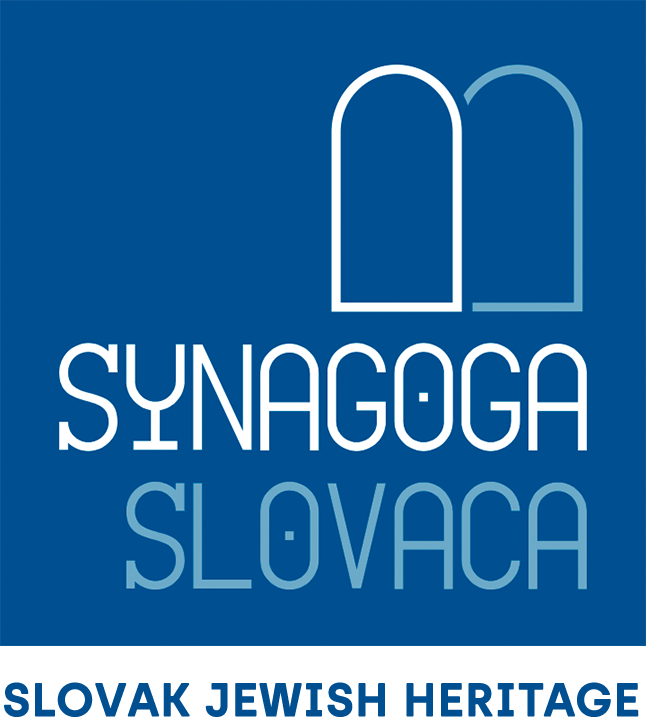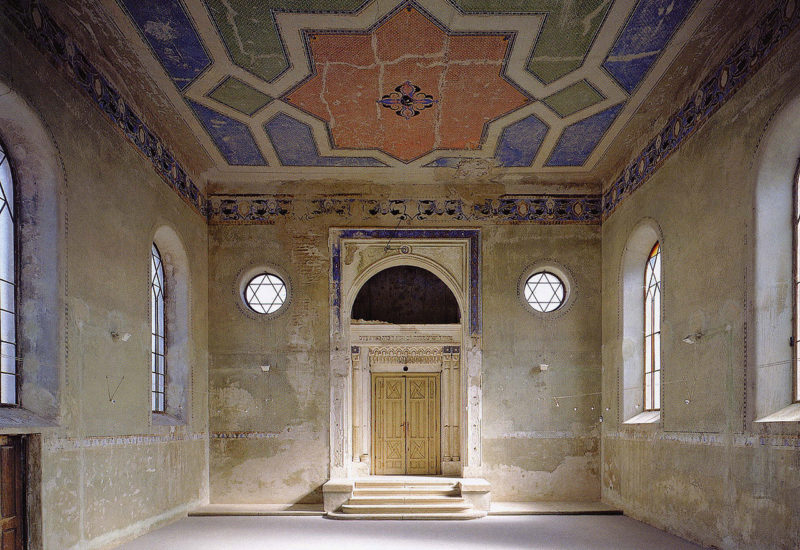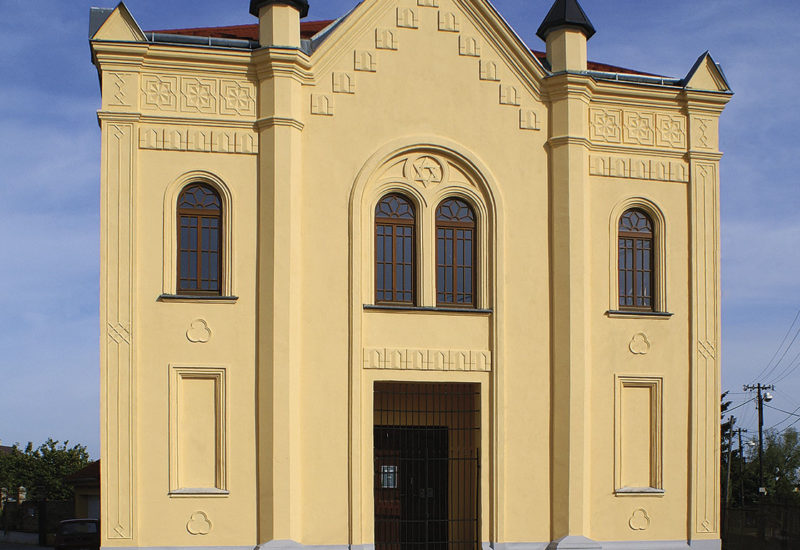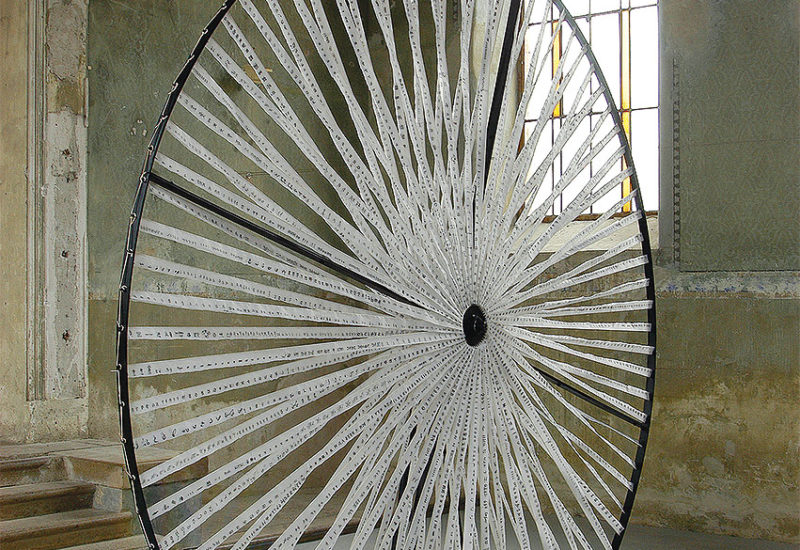Šamorín, Synagogue
Šamorín’s former synagogue stands at the heart of a traditional architectural setting that also comprises a former Jewish school and other Jewish communal buildings. The synagogue, a rather small building with a simple façade, was spared twice from destruction. The German army, which used the building as an ammunition dump, wanted to blow it up as it retreated from the town in 1945 – but did not do so. Then, in the 1990s, after the building had stood neglected for decades, Csaba and Susanne Kiss stepped in to save it from demolition. They restored the synagogue as a precious site of memory and established there the At Home Gallery, a center for contemporary art and cultural dialogue that attracts artists, musicians and other figures from around the world. In 2000, the Dalai Lama visited the synagogue during an exhibition by Tibetan monks.
Jews were barred from living in Šamorín until 1840. Instead, they resided in nearby Mliečno and commuted to Šamorín for business. They gradually moved to Šamorín after an organized Jewish community was established there in the 1860s. In 1912, the Jewish community built a new synagogue on the eastern outskirts of the town. The community prospered and had 318 members in 1930. Šamorín was occupied by Hungary in 1938-1945. On April 16, 1944 a ghetto was established around the synagogue, where local Jews were concentrated. After six weeks, they were transported to Dunajská Streda and from there to Auschwitz. A small Jewish community was reestablished after the Holocaust. It ceased to exist during the 1960s, and today there are no Jewish residents in Šamorín.
Address
Mliečňanská 6
Šamorín
Coordinates
48°01’33.5″N
17°18’49.1″E



